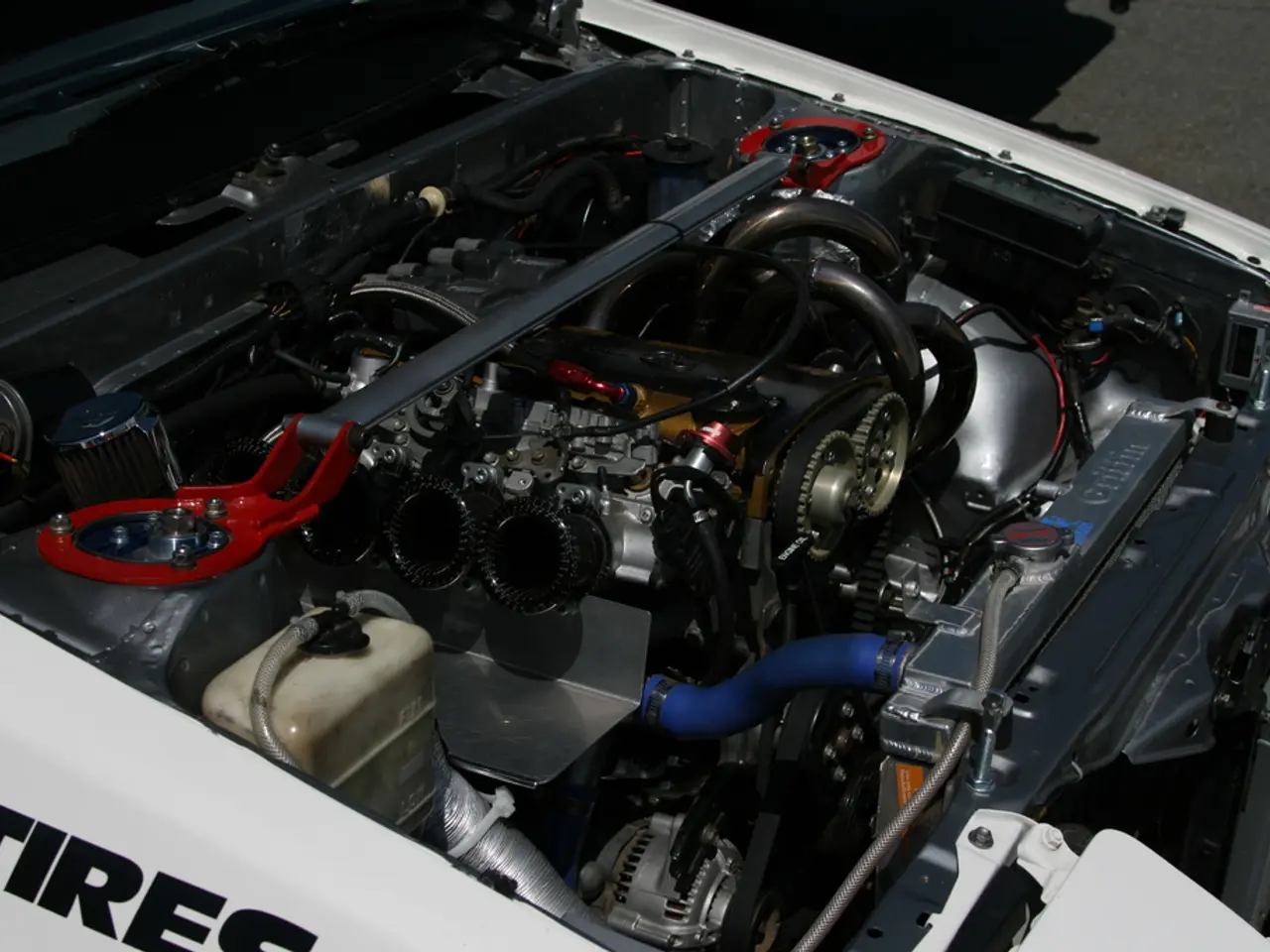Repurposing Used Electric Vehicle Batteries: A Look into 'Second-Life' Battery Packs!
In the rapidly evolving world of electric vehicles (EVs), the end of an electric vehicle's life doesn't have to mean the end of its usefulness. Second-life EV batteries, once considered spent, are now finding new purpose in a variety of applications, contributing to a more sustainable and circular economy.
With an estimated market value of $1.6 billion in 2023, and projections indicating a substantial expansion to approximately $12.42 billion by 2034, the market for second-life EV batteries is growing rapidly [1][3]. This growth is driven by the increasing sales of EVs, creating a rising volume of end-of-first-life batteries, and policy incentives promoting sustainability and energy resilience worldwide.
One of the primary applications for these repurposed batteries is stationary energy storage for residential and commercial use. However, their potential extends far beyond that. They are also being used to support electric grid stability through grid-level storage and peak shaving, provide telecom backup power systems, serve as energy storage in renewable energy integration, and even be used in EV charging infrastructure to buffer demand and support fast charging [1][3].
Companies like Jaguar, Audi, Mercedes, Hyundai, BMW, Kia, Volkswagen, and Nissan are all part of this movement, converting retired EV battery packs into energy storage facilities for various purposes. For instance, Jaguar is providing 30 'second-life' I-Pace batteries for solar and wind power storage systems, while Volkswagen is using old batteries from its vehicles to create portable EV recharging stations [4][5].
Moreover, the predominance of lower-cost Lithium Iron Phosphate (LFP) batteries since 2023, with prices dropping below $100 per kWh, further supports the economic viability of second-life battery projects [2]. This affordability makes these batteries a reliable resource for multiple use cycles.
In addition to repurposing, companies are also focusing on recycling retired EV batteries. Volkswagen aims to reclaim up to 97 percent of raw materials from retired batteries in the near future, and during battery recycling, batteries are broken down, shredded, and the constituent parts are extracted, including valuable raw materials like nickel, manganese, cobalt, and lithium [6].
As the market for second-life EV batteries continues to grow, so does the importance of repurposing or recycling. By 2025, there will be 3.4 million used EV batteries globally, highlighting the need for sustainable solutions [7]. McKinsey predicts that second-life battery supply for stationary applications could exceed 200 gigawatt-hours per year by 2030, creating a global value over $30 billion [8].
Legislation around the world is being enacted to ensure the continuation of EV battery repurposing and recycling efforts. In Melbourne, firms like Infinitev are launching services to reuse, repurpose, or recycle hybrid and EV batteries, while companies like Tesla, BMW, and Volkswagen are working on breaking down batteries and extracting raw materials for new battery production [9].
In conclusion, the market for second-life EV batteries is a significant and rapidly growing one, with diverse and expanding applications centred on energy storage and backup power solutions. As we move towards a more sustainable future, the repurposing and recycling of EV batteries will play a crucial role in creating a circular economy and reducing waste.
References: [1] https://www.greencarreports.com/news/1129833_second-life-ev-batteries-are-poised-to-revolutionize-energy-storage [2] https://www.greencarreports.com/news/1130850_lithium-iron-phosphate-batteries-are-getting-cheaper-and-better [3] https://www.greencarreports.com/news/1130850_lithium-iron-phosphate-batteries-are-getting-cheaper-and-better [4] https://www.greencarreports.com/news/1130814_jaguar-is-providing-30-second-life-i-pace-batteries-for-solar-and-wind-power-storage-systems [5] https://www.greencarreports.com/news/1129833_second-life-ev-batteries-are-poised-to-revolutionize-energy-storage [6] https://www.greencarreports.com/news/1130850_lithium-iron-phosphate-batteries-are-getting-cheaper-and-better [7] https://www.greencarreports.com/news/1130850_lithium-iron-phosphate-batteries-are-getting-cheaper-and-better [8] https://www.mckinsey.com/industries/automotive-and-assembly/our-insights/second-life-batteries-the-next-big-thing-in-energy-storage [9] https://www.greencarreports.com/news/1129833_second-life-ev-batteries-are-poised-to-revolutionize-energy-storage
- The rapid growth of the electric vehicle industry is not only beneficial for climate-change mitigation but also for environmental-science and the economy, as second-life electric vehicle (EV) batteries hold immense potential.
- Science has paved the way for the technological advancement of electric vehicles, thereby opening doors for renewable-energy and a more sustainable lifestyle.
- With the finance sector increasingly focusing on investing in cleaner and more sustainable solutions, the industry stands to gain significantly from deals-and-discounts associated with electric vehicles and battery technology.
- As interest in sustainable-living grows, home-and-garden enthusiasts are turning to solar panels integrated with second-life EV batteries for energy efficiency and cost-effectiveness in their homes.
- With second-life EV batteries becoming a reliable resource for multiple use cycles, housing-market trends may shift towards smart and energy-efficient buildings incorporating battery storage.
- Data-and-cloud-computing companies are exploring the use of second-life EV batteries in increasing energy demands for their operations, diverting them away from fossil fuels and contributing to energy conservation.
- As more people opt for electric vehicles and eco-friendly travel options like budget-travel, adventure-travel, and sports events, the demand for sustainable transportation solutions will rise.
- The integration of second-life EV batteries in sports venues and stadiums can support environmentally-friendly sports-betting operations, creating a more sustainable sports and entertainment atmosphere.
- Travel industry players, such as hotels, airlines, and car rental agencies, are embracing the benefits of partnering with EV manufacturers to promote electric vehicles and reap the rewards of offering deals-and-discounts to their customers.
- Shopping centers and malls are incorporating electric vehicle charging stations, promoting sustainable-living choices among consumers and enhancing their shopping experience.
- Governments and policymakers are recognizing the importance of promoting EV battery repurposing and recycling initiatives, as they aim to reduce waste and encourage sustainable business practices in the real-estate and energy sectors.
- Technology companies, working in collaboration with EV manufacturers, are striving to innovate in second-life EV battery applications, ensuring that a circular economy remains at the heart of our transition towards a low-carbon future.




